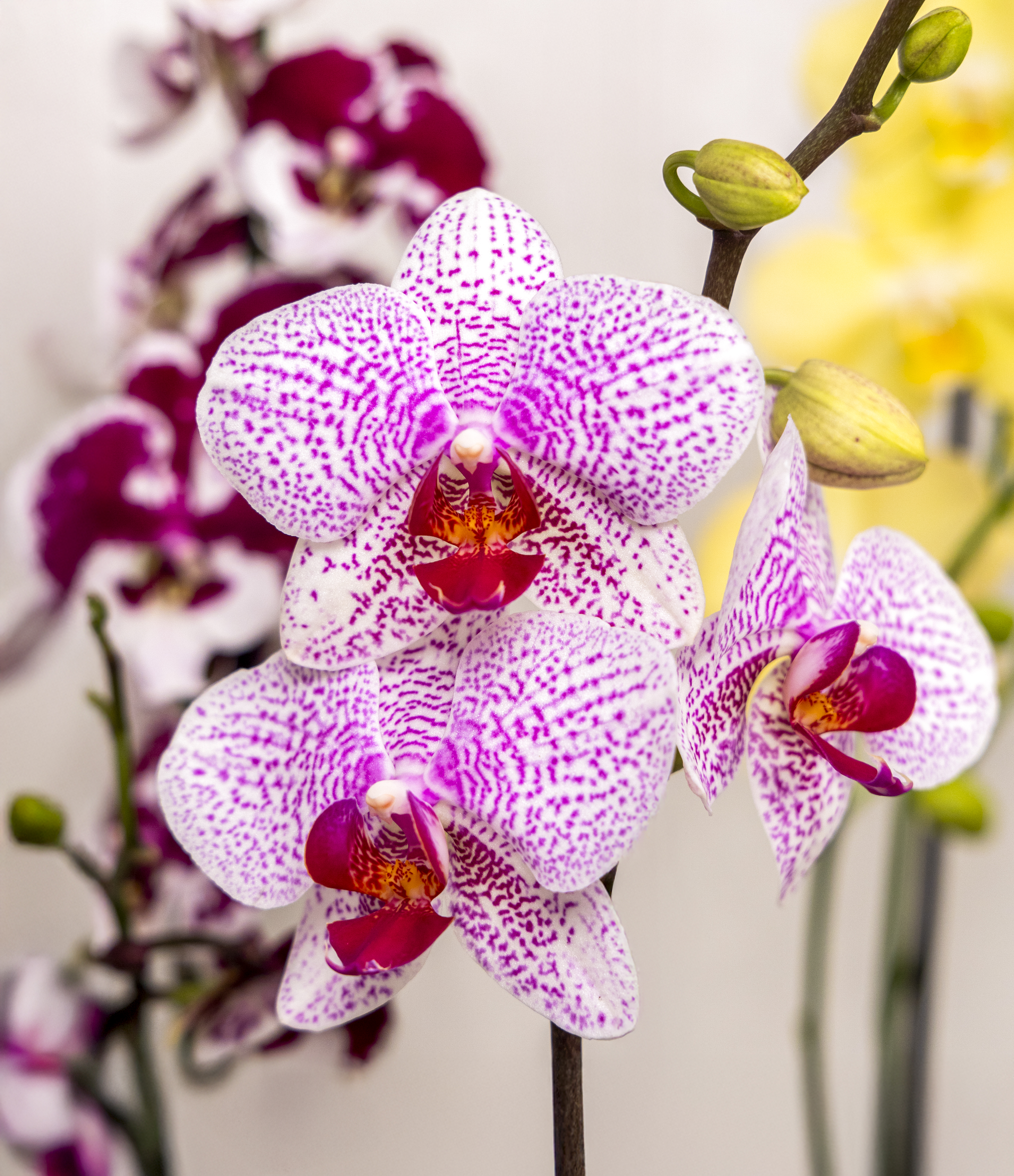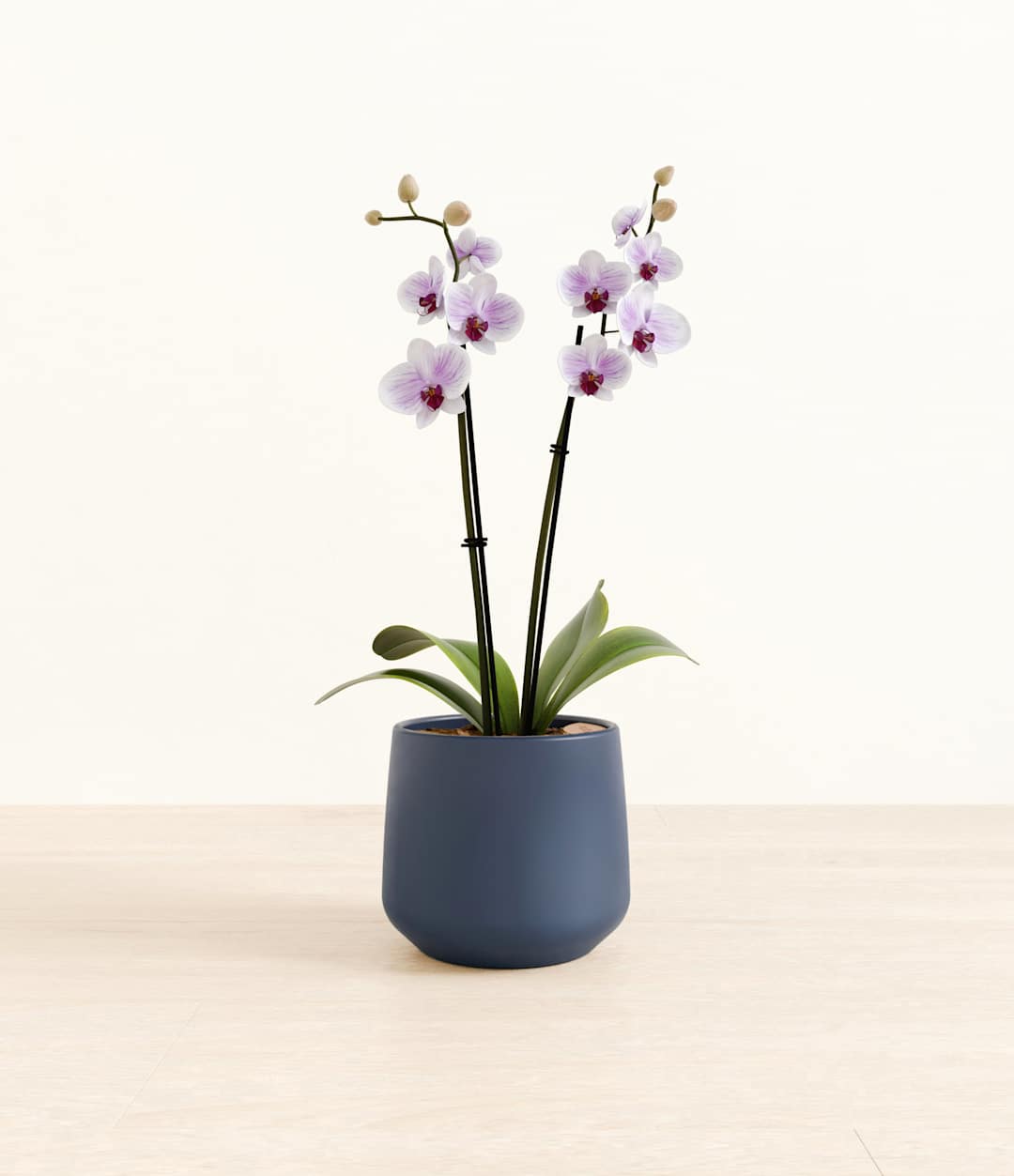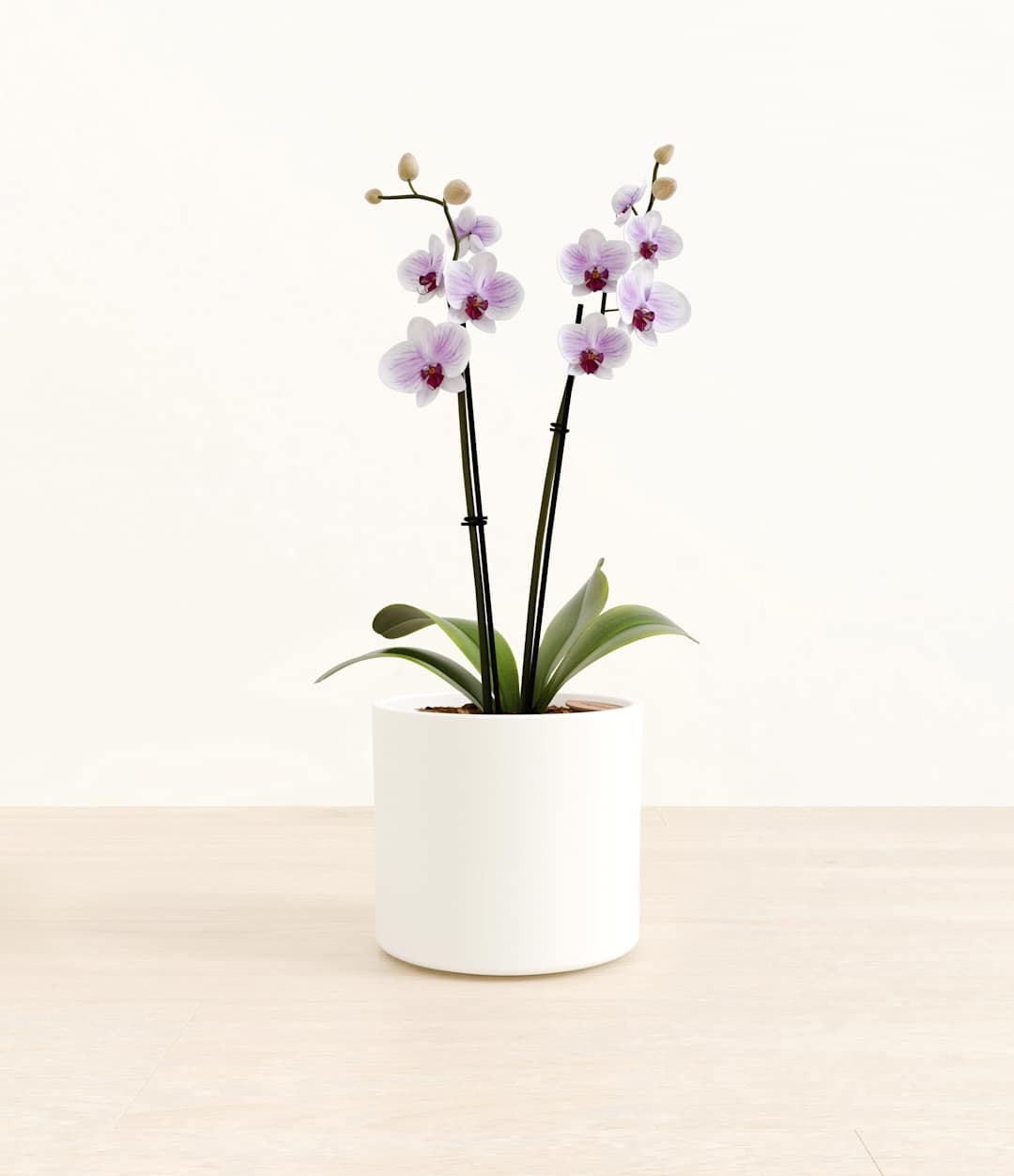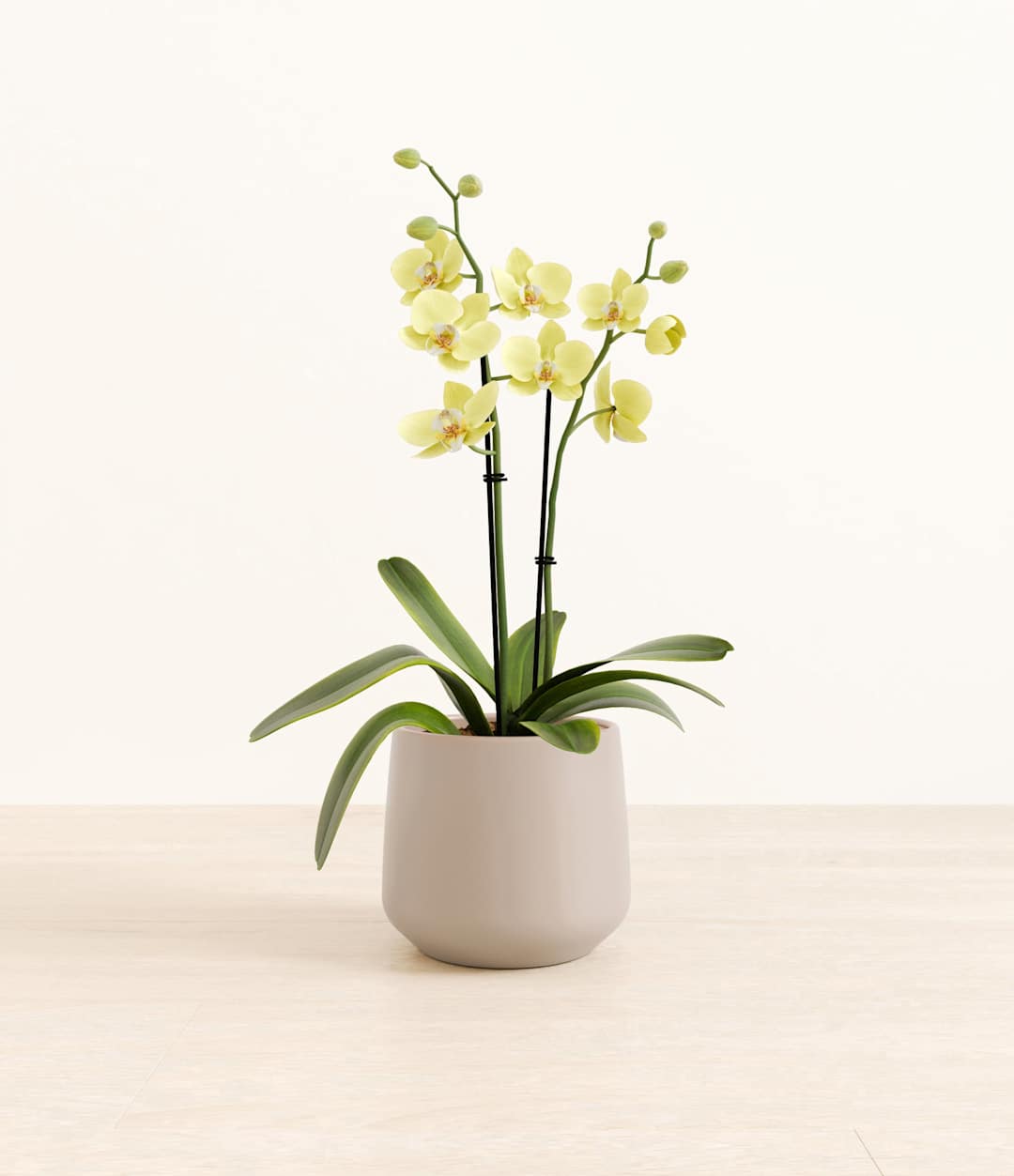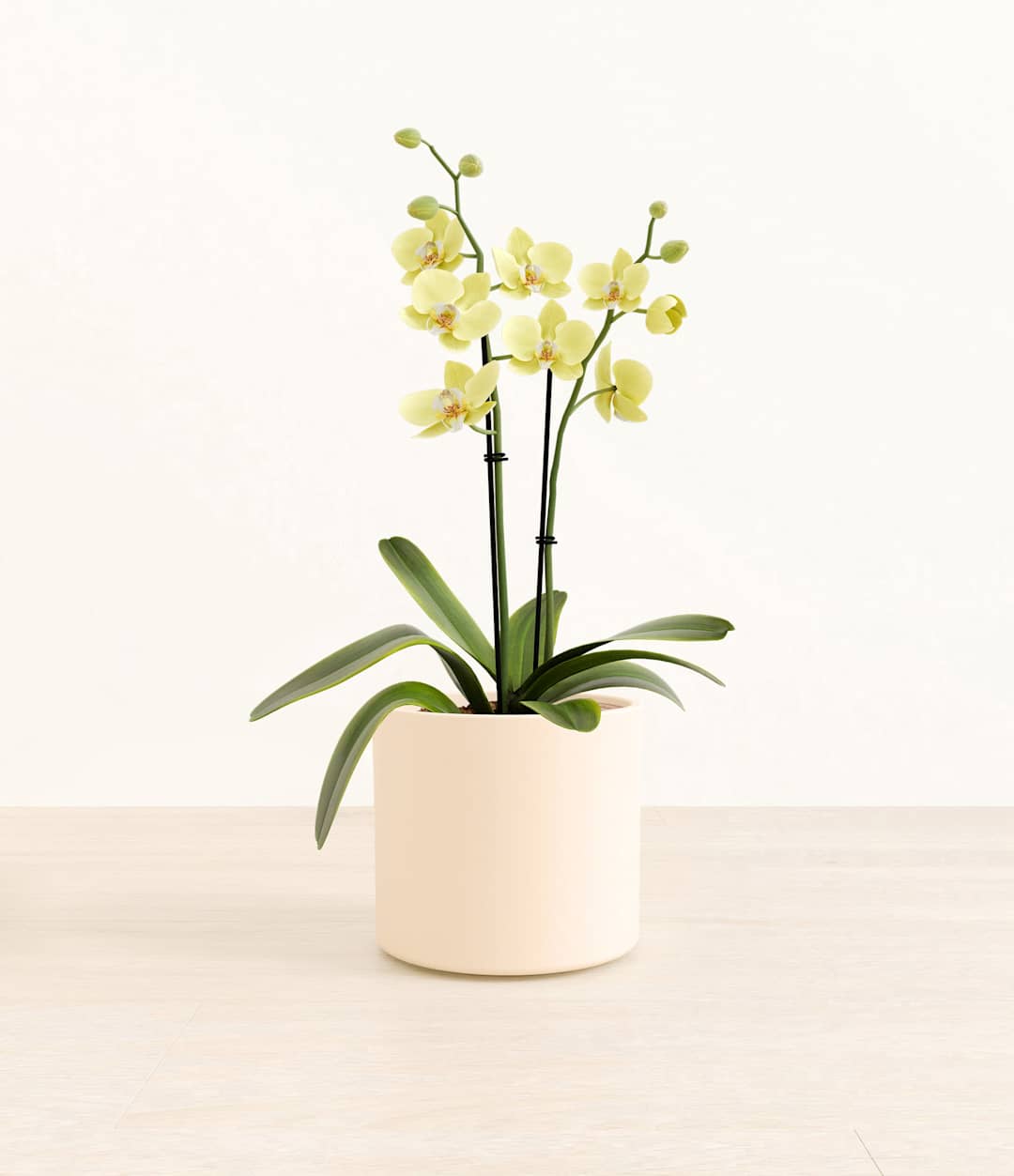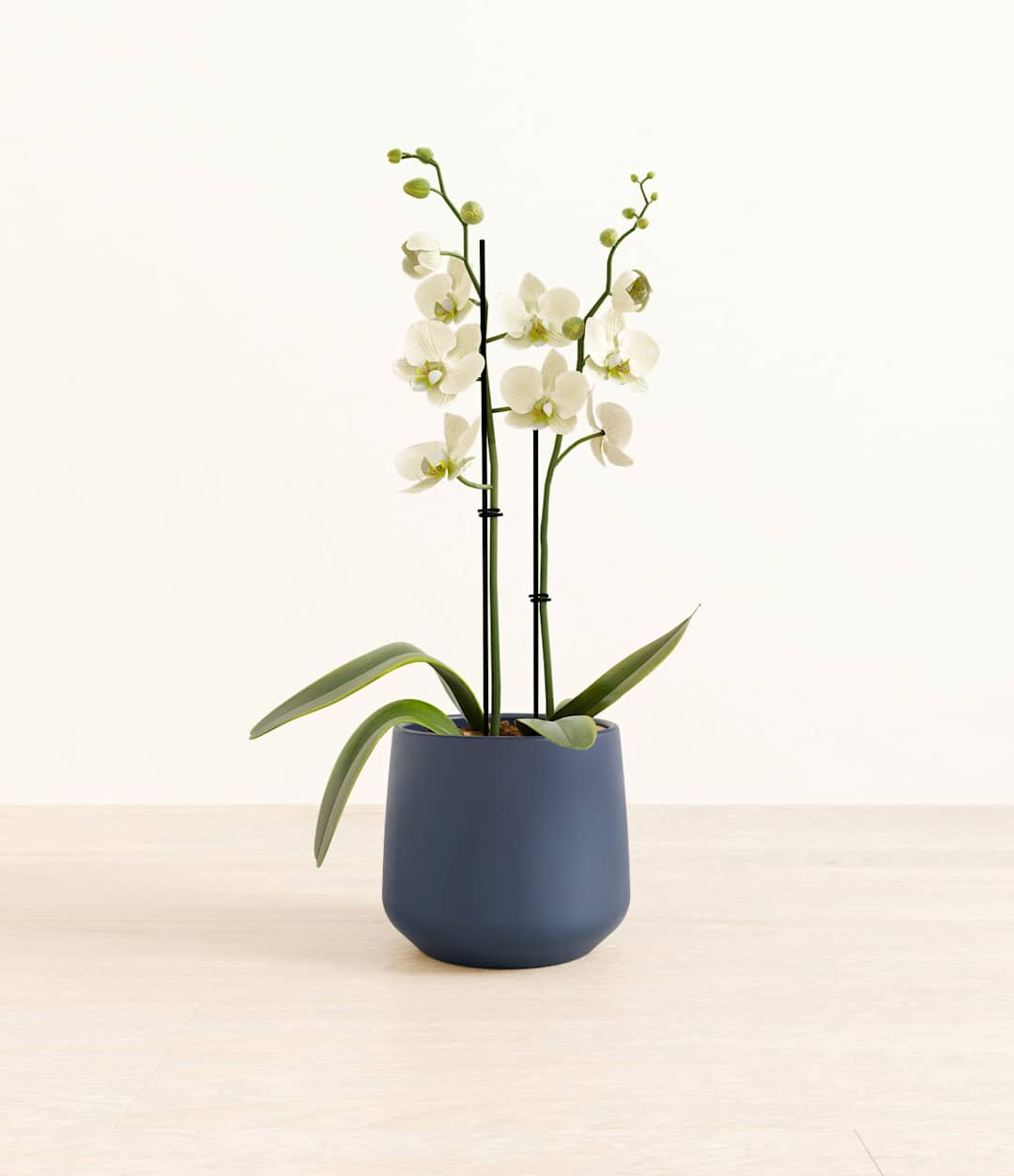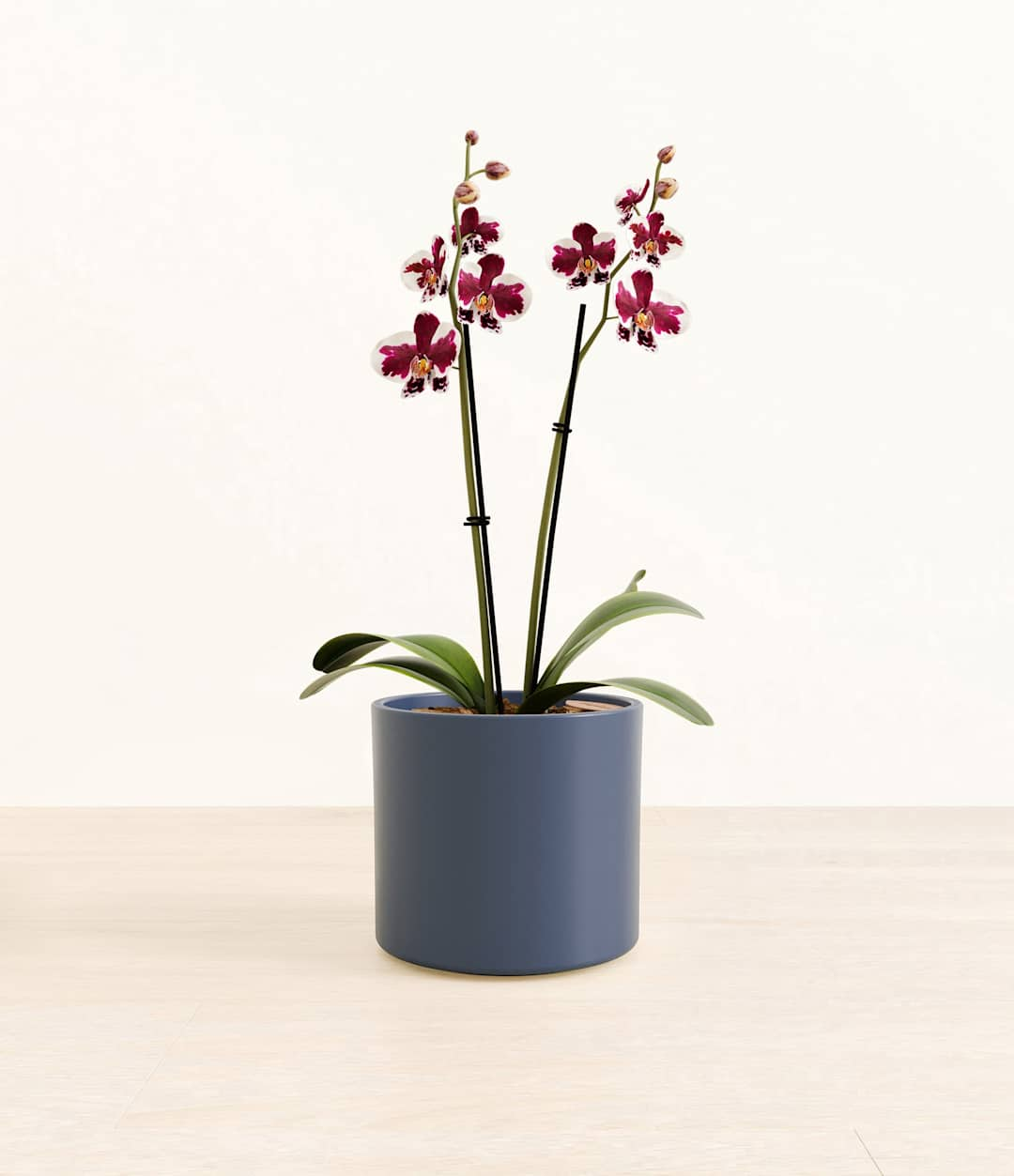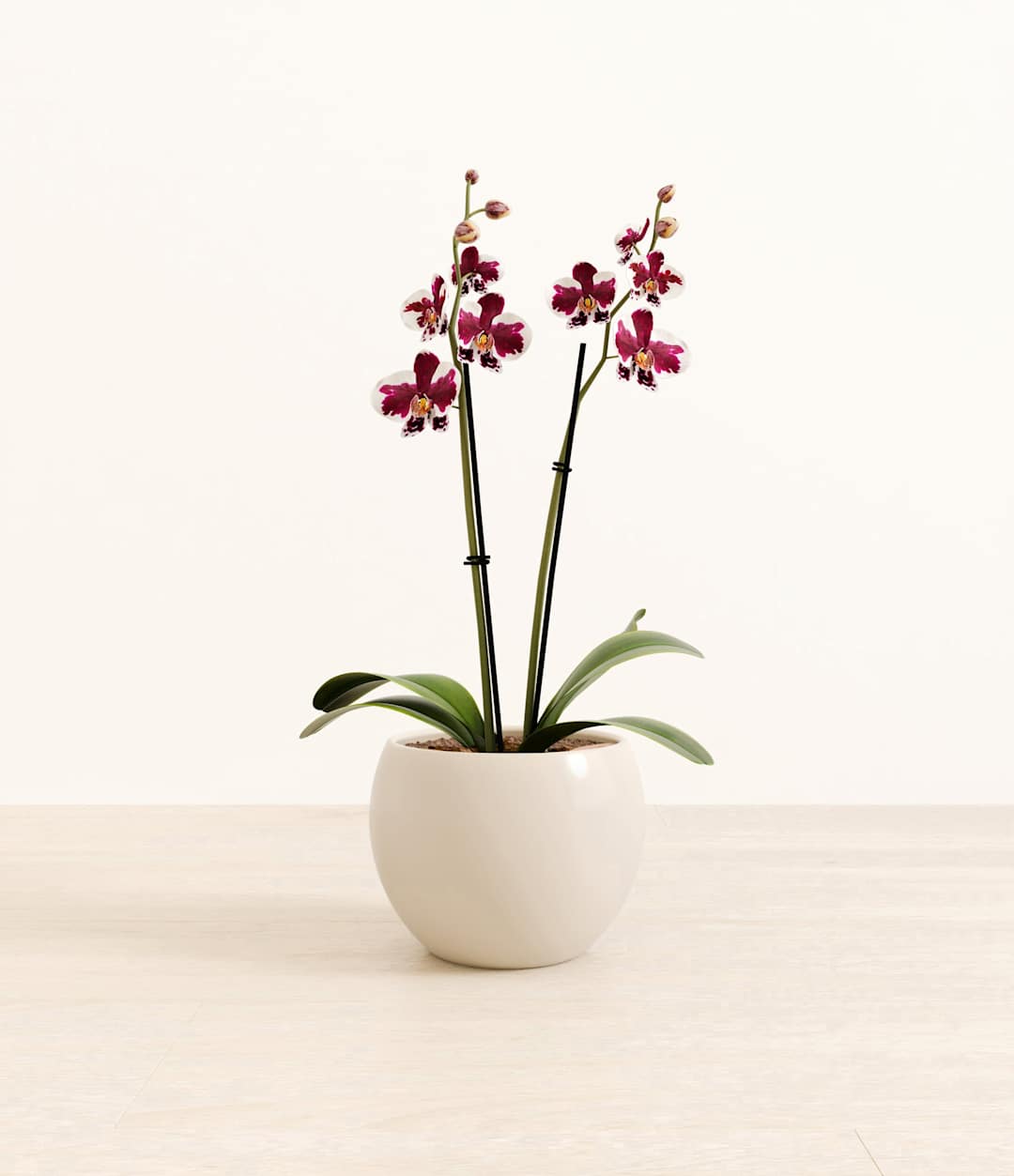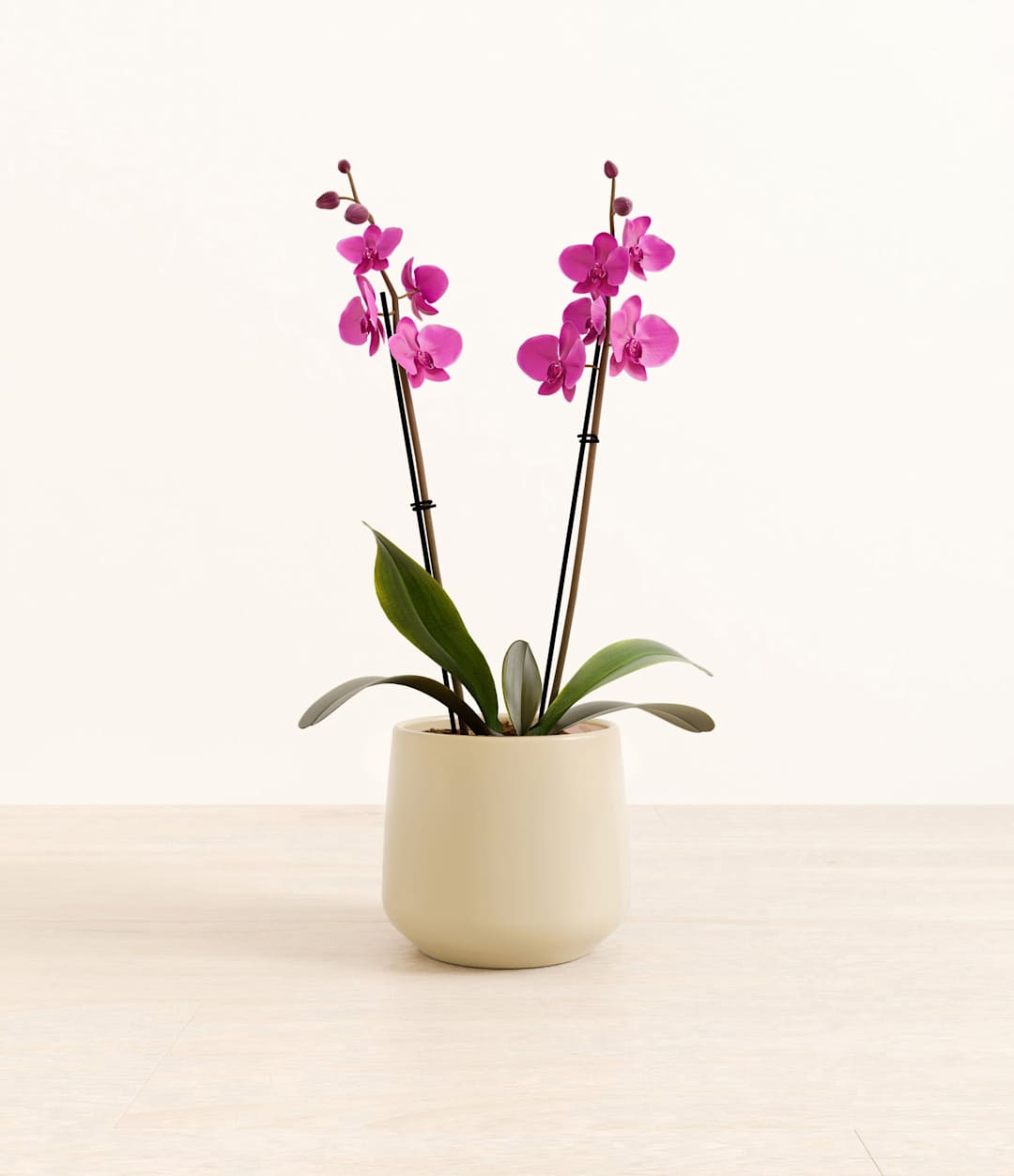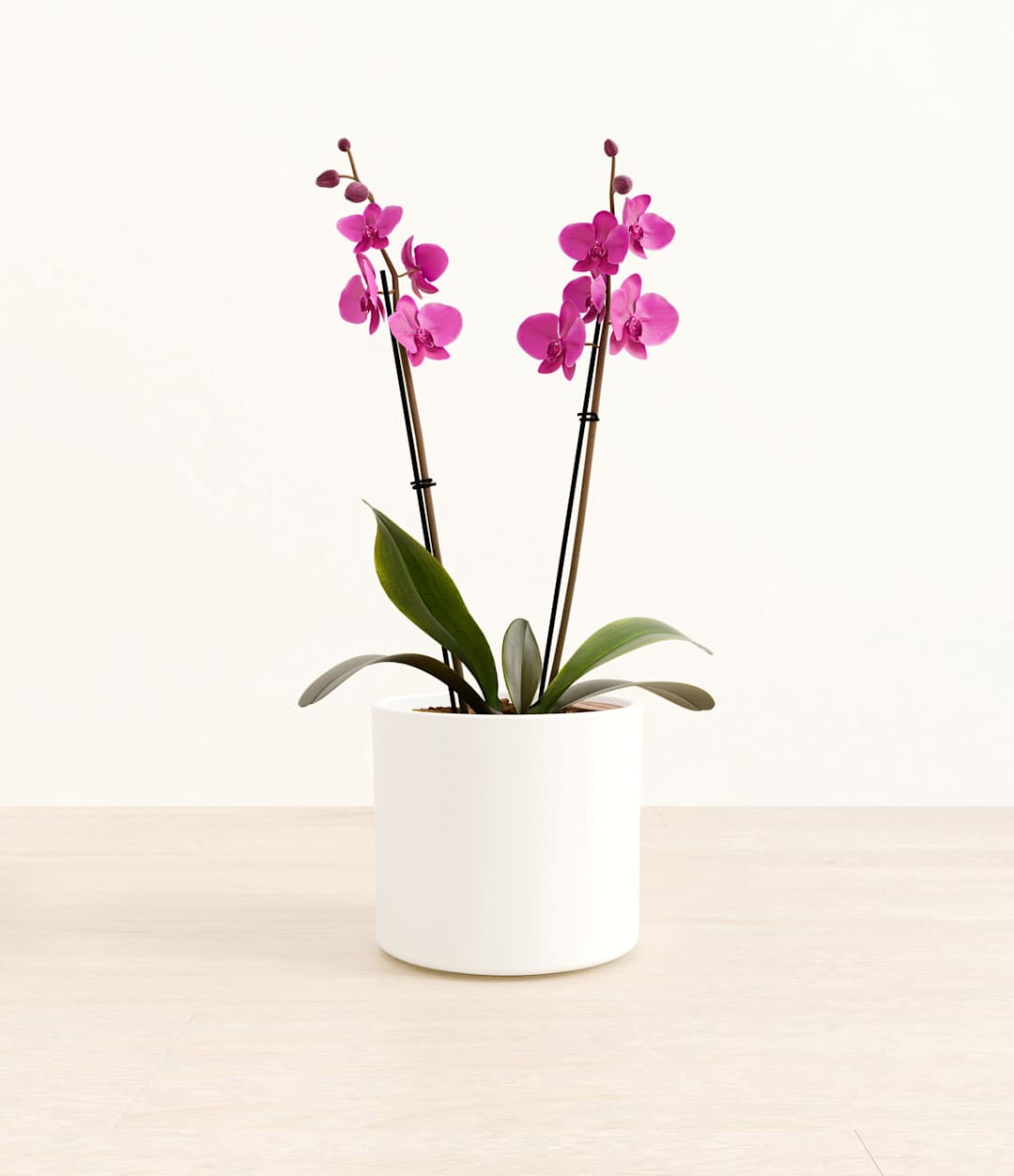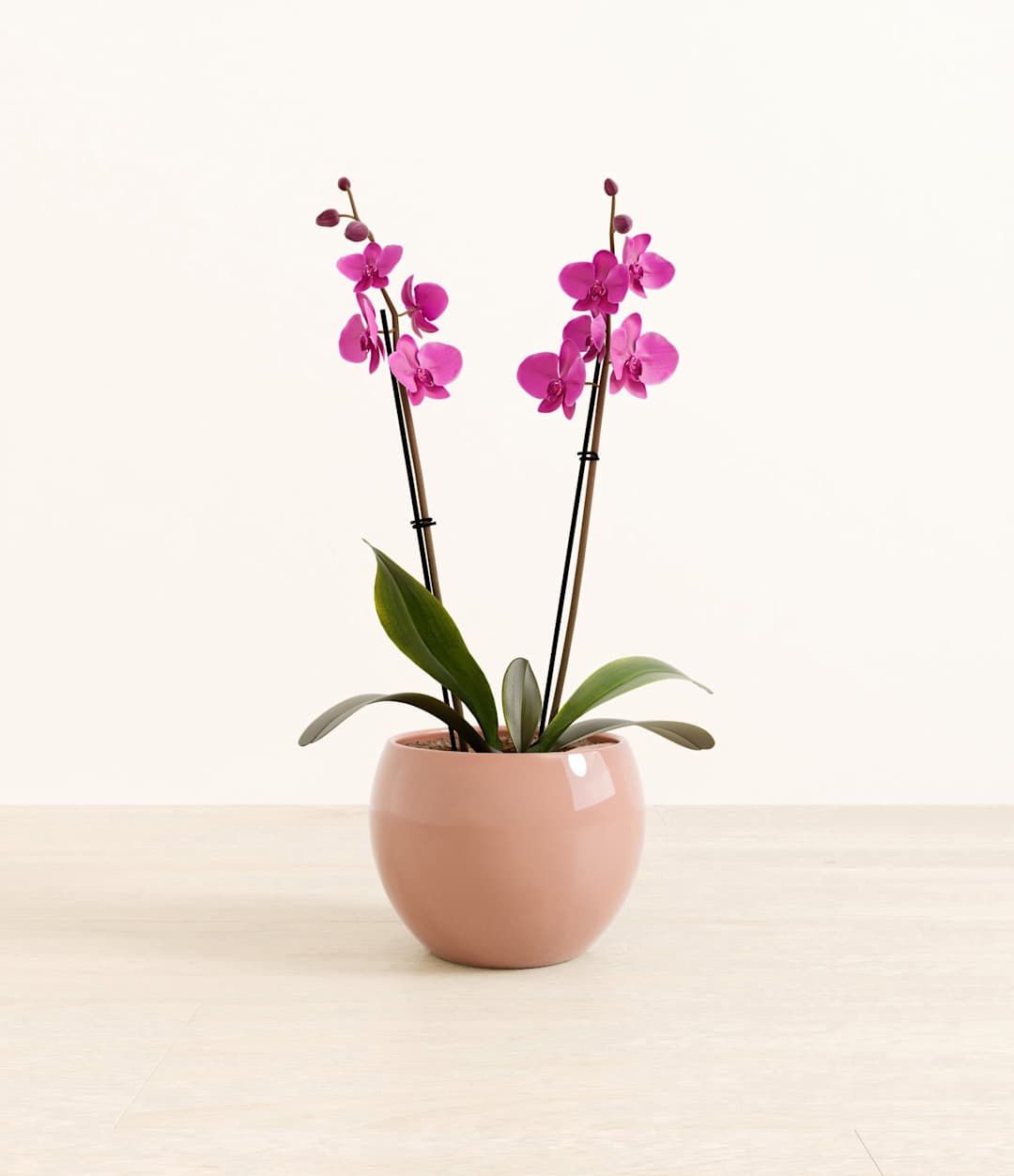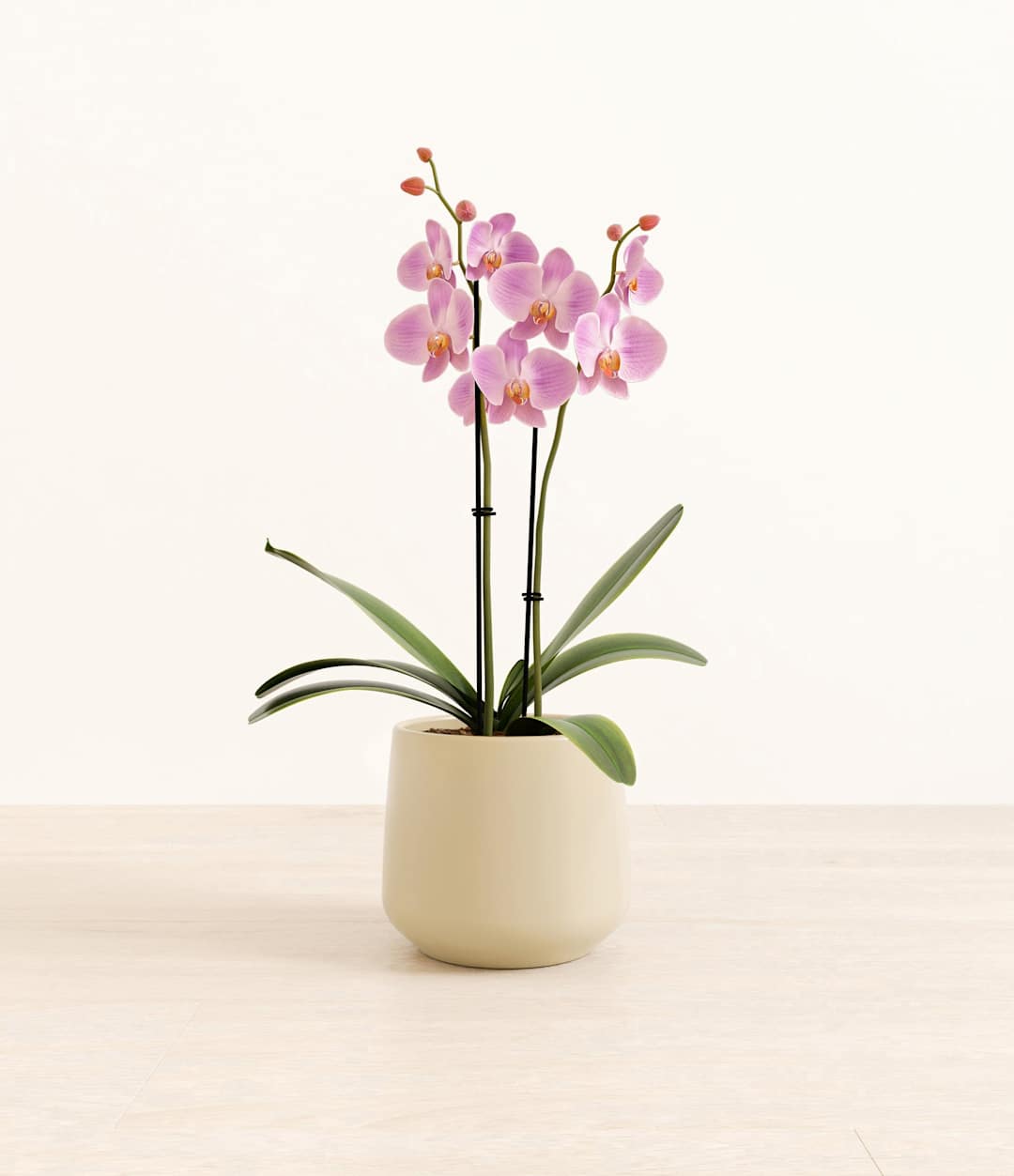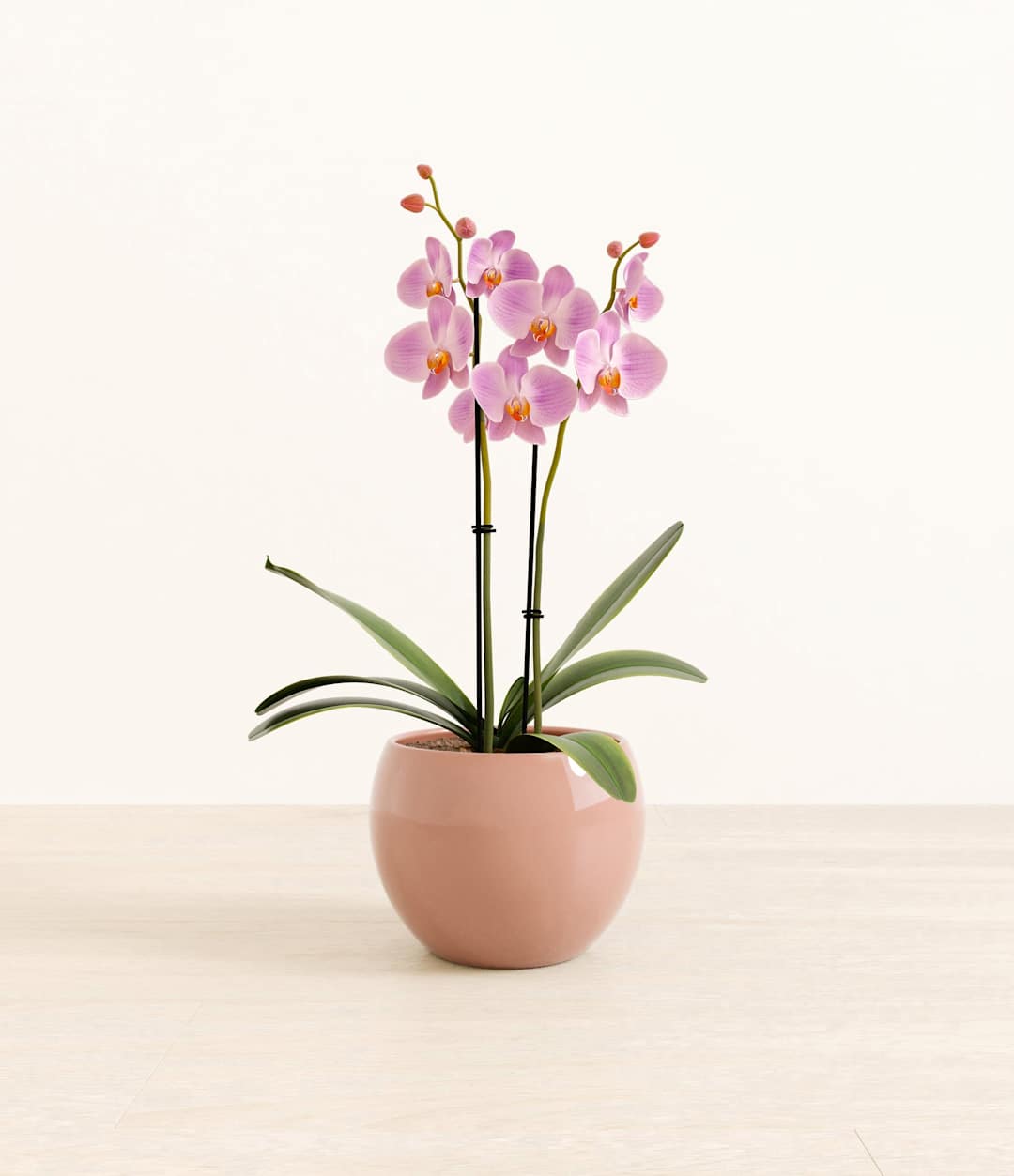How to Care for a Phalaenopsis Orchid
Shop this plantAbout Phalaenopsis Orchid
Native to the tropical forests of South-East Asia, the Phalaenopsis Orchid, commonly known as the Moth Orchid, brings refined beauty to any space with its elegant, butterfly-like blooms. Its glossy foliage and eye-catching flowers can last for several months, adding a sophisticated touch to your home. Grown in an easyplant self-watering pot, it receives the consistent care it needs to flourish. While encouraging orchids to rebloom often calls for patience and precision, the easyplant system creates the ideal conditions for it to happen naturally.
Other common names
- Moon Orchid
- Moth Orchid
How Often Should I Water My Phalaenopsis Orchid?
With easyplant, caring for your Phalaenopsis Orchid is wonderfully simple. Check the easyplant reservoir every two months and top it up when empty - and you're all set. Known for its graceful blooms and elegant, arching stems, this orchid thrives in stable conditions, and the easyplant system removes the guesswork from watering.
Phalaenopsis Orchid Light Needs
The Phalaenopsis Orchid grows best in a space with bright, indirect light, where sunlight is gently filtered. Avoid placing it in areas with harsh direct sun, which may scorch its delicate foliage and flowers, or in spots lacking natural light altogether.
An ideal position is near an east-facing window, where it can enjoy soft morning light, or in a bright room with filtered daylight. If natural light is limited, this orchid can also thrive under grow lights or fluorescent bulbs, making it well-suited to offices or low-light interiors. Providing the right light is key to encouraging blooms and supporting the plant’s elegant, arching stems.
Phalaenopsis Orchid Care
In its first few days at home, your Phalaenopsis Orchid may drop a bloom or two as it settles into its new environment. This is completely normal and nothing to worry about. Once acclimatised, it will continue to thrive and reward you with beautiful, long-lasting flowers. Like many flowering plants, it will benefit from gentle deadheading - simply remove any faded blooms to help redirect energy towards new growth.
To encourage healthy development, rotate the pot a quarter turn once a month to ensure even light exposure. Keep the foliage free from dust by wiping it gently with a damp cloth, and avoid placing the orchid in areas with sudden temperature changes or strong draughts. With a little care, your Phalaenopsis Orchid will remain an elegant, blooming feature all year round.
How Often Do Phalaenopsis Orchids Bloom?
Phalaenopsis Orchids are prized for their elegant, long-lasting blooms, which can remain vibrant for up to three months. Once the final flower drops, don’t worry - your orchid isn’t finished; it’s simply entering a natural rest period. During this time, continue with your usual care routine, keeping it in a spot with bright, indirect light and steady warmth.
You have two options for the spent flower spike: either trim it just above a visible node (a small bump along the stem) to encourage a possible secondary spike, or cut it all the way down to the base to help the plant redirect energy to root and leaf growth.
Patience is key - your orchid may take several months to prepare for its next blooming cycle. To encourage new flowers, maintain consistent care and consider placing the orchid in a slightly cooler environment at night (around 16–18°C) for a few weeks. This gentle temperature drop can prompt the plant to form a new flower spike. With the right balance of light, temperature and time, your Phalaenopsis Orchid will reward you with another display of stunning blooms.
How Big Will My Phalaenopsis Orchid Grow?
Phalaenopsis Orchids grow slowly and steadily, focusing their energy on producing long-lasting blooms rather than rapid leaf growth. When grown indoors in ideal conditions - bright, indirect light and stable humidity - each flower spike can reach up to 45–60cm tall, arching gracefully with several blooms at a time. While the foliage remains compact, typically no more than 15–30cm in height, the plant will gradually develop more leaves and roots over time.
New flower spikes generally appear once or twice a year, often following a rest period after the previous blooms have faded. With patience and proper care, a mature Phalaenopsis Orchid can flower for months and continue to thrive for many years. To encourage reblooming, provide consistent light, avoid overwatering, and consider trimming old flower spikes just above a visible node once flowering has finished.
Temperature & Humidity
Phalaenopsis Orchids thrive in warm, humid environments that reflect their tropical origins. The ideal temperature range is between 18°C and 27°C. These orchids are sensitive to temperature extremes, so avoid placing them near draughty windows, radiators, or air vents.
They prefer moderate to high humidity, ideally around 50–70%. In drier indoor settings, especially during the winter months, you can raise humidity by using a humidifier, placing the pot on a tray of pebbles and water (ensuring the base of the pot doesn’t sit directly in the water), or positioning it near other moisture-loving plants. Maintaining steady warmth and consistent humidity will help your orchid remain healthy and bloom beautifully.
Are Phalaenopsis Orchids Toxic to Pets & Children?
Phalaenopsis Orchids are non-toxic and safe for both people and pets, making them a great choice for homes with curious animals or young children. While it’s always wise to keep any plant out of reach to prevent nibbling or accidental damage, you can rest assured that the Phalaenopsis Orchid doesn’t pose a risk if lightly touched or accidentally ingested in small amounts. However, as with any non-edible plant, consuming large quantities may cause mild stomach discomfort - so it’s still best to display your orchid in a safe, elevated spot.
Troubleshooting Common Problems with Phalaenopsis Orchid
Phalaenopsis Orchids are relatively easy to care for, but like any plant, they may show signs of stress if conditions aren’t quite right.
If you notice wrinkled or leathery leaves, this is often a sign of underwatering - check the easyplant reservoir to ensure it isn’t empty. If you’re using a standard pot, make sure the roots haven’t been left dry for too long.
Yellowing leaves near the base are sometimes part of the plant’s natural cycle, but if several leaves turn yellow at once, it may indicate overwatering. Allow the reservoir to fully empty before refilling, and ensure the plant receives enough indirect light.
Brown or crispy leaf tips usually suggest low humidity or exposure to dry air - placing the plant near a humidifier or on a pebble tray can help restore moisture to the surrounding environment.
If buds drop before opening - a condition known as bud blast — sudden temperature changes, draughts, or humidity fluctuations are likely to blame. Make sure your orchid is kept in a warm, stable location with bright, indirect light.
A lack of reblooming may simply mean the plant is in a resting phase. However, if it persists for several months, try moving the orchid to a brighter spot and allowing slightly cooler temperatures at night to encourage a new flowering cycle.
Lastly, if you notice sticky residue, yellow speckling, or fine webbing, this may be a sign of pests such as mealybugs or spider mites - gently wipe the leaves and treat with neem oil or insecticidal soap if necessary.
With the right care and attention, your orchid will recover and continue to thrive beautifully.
Frequently Asked Questions about Phalaenopsis Orchid Plant
- How many times a year do Phalaenopsis Orchids bloom?
Phalaenopsis Orchids typically bloom once or twice a year - but with easyplant’s self-watering system, some may surprise you with even more frequent displays!
- Should my orchid’s roots be sticking out of the pot?
Yes, absolutely normal! Orchids are epiphytes, which means they naturally grow on trees rather than in soil. Because of this, they often produce aerial roots that extend beyond the pot. These roots help the plant absorb moisture and air, just as they would in the wild. There’s no need to trim or reposition them - healthy aerial roots are a great sign your orchid is thriving.
- What should I do with a Phalaenopsis Orchid after flowering?
Once the final bloom fades, there’s no need for concern - your orchid is simply entering a rest period. You can either trim the flower spike just above a visible node to encourage a possible second bloom, or cut it back to the base to allow the plant to redirect energy into new leaves and roots. Continue with regular care, and it will likely bloom again.
- How do I care for a Phalaenopsis Orchid?
Keep it in bright, indirect light and check the easyplant reservoir roughly every two months, refilling when needed. Avoid sudden temperature changes or cold draughts, and provide a bit of extra humidity - your orchid will reward you with elegant, long-lasting flowers.
- Where is the best place to put a Phalaenopsis Orchid?
An area with bright, indirect light - such as near an east-facing window - is ideal. Avoid placing it in strong, direct sunlight or near cold draughts to keep it healthy and blooming.
